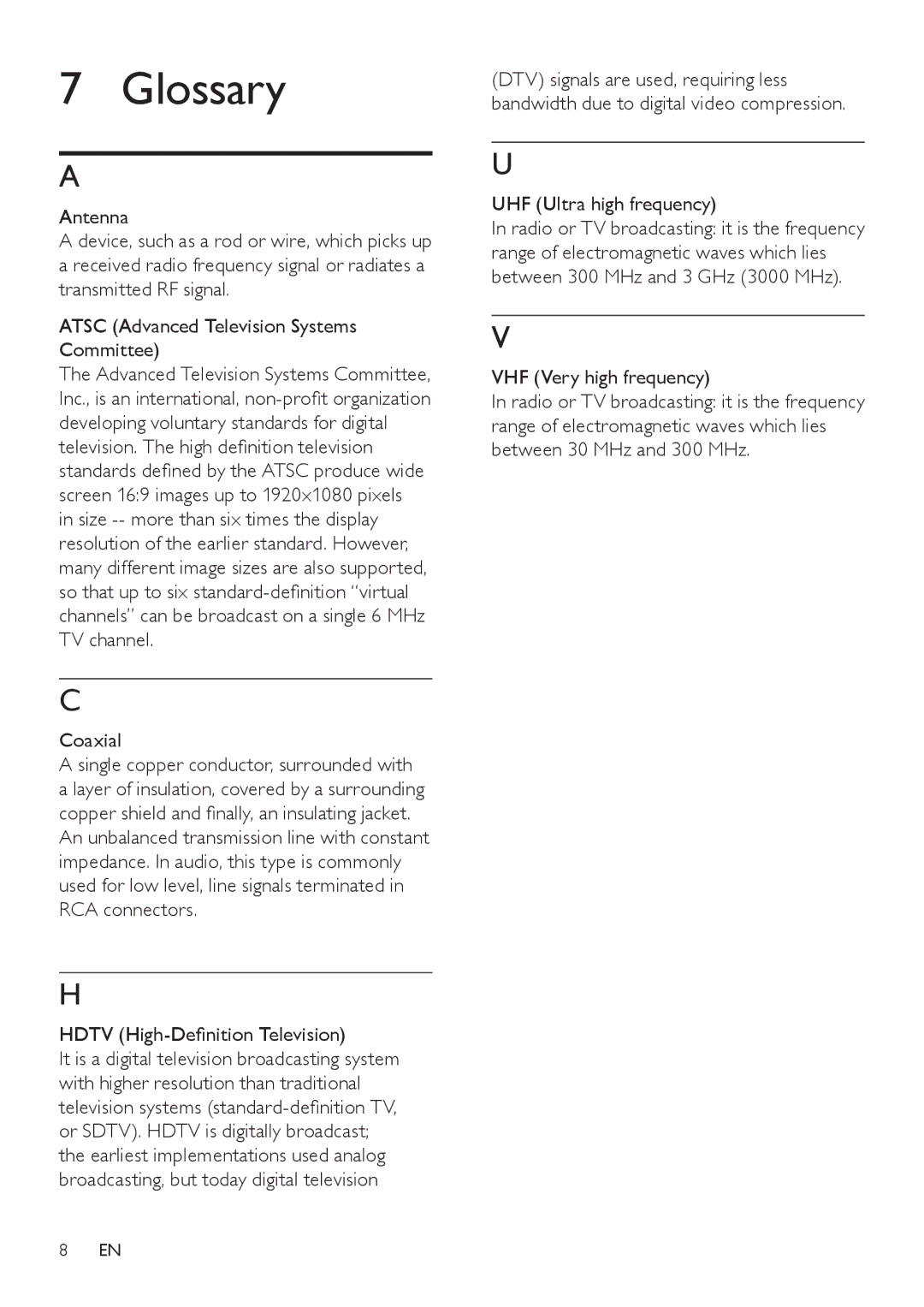SDV1121T/27 specifications
The Philips SDV1121T/27 is a remarkable digital indoor antenna that caters to the evolving needs of modern television users. Designed with cutting-edge technology, this antenna ensures optimal reception of digital TV signals, making it a valuable addition to any home entertainment setup.One of the standout features of the SDV1121T/27 is its sleek and compact design. Its slim profile allows for easy placement in various locations, whether it's mounted on a wall, positioned on a shelf, or even standing unobtrusively on a tabletop. This versatility makes it a perfect fit for urban dwellers with limited space, as it does not compromise aesthetics while providing high-quality reception.
The antenna is built with advanced signal amplification technology, capable of enhancing weak signals to deliver clear, crisp images and sound. This feature is particularly beneficial for users located in areas with limited access to broadcast towers. The built-in amplifier can be powered through a USB port or an external power adapter, providing flexibility for different installation scenarios.
Another notable characteristic of the Philips SDV1121T/27 is its wide frequency range, allowing it to receive both VHF and UHF signals. This broad spectrum compatibility ensures that users have access to a variety of channels, including local broadcasts, regional programming, and potentially even national networks, depending on the geographic location.
The antenna also features a detachable coaxial cable, which not only simplifies the setup process but also enhances convenience during installation. Users can easily adjust the cable length to suit their specific needs, minimizing clutter and ensuring a tidy appearance.
Furthermore, Philips stands by the quality of its products, and the SDV1121T/27 is no exception. The antenna has undergone rigorous testing to ensure durability and performance, allowing users to enjoy a reliable viewing experience over an extended period.
In conclusion, the Philips SDV1121T/27 is an excellent choice for anyone seeking a dependable and stylish indoor antenna. With its powerful signal amplification, wide frequency support, and thoughtful design, it provides a superior solution for digital television reception. Whether you are a casual viewer or a dedicated enthusiast, this antenna promises to enhance your TV experience with minimal hassle.

